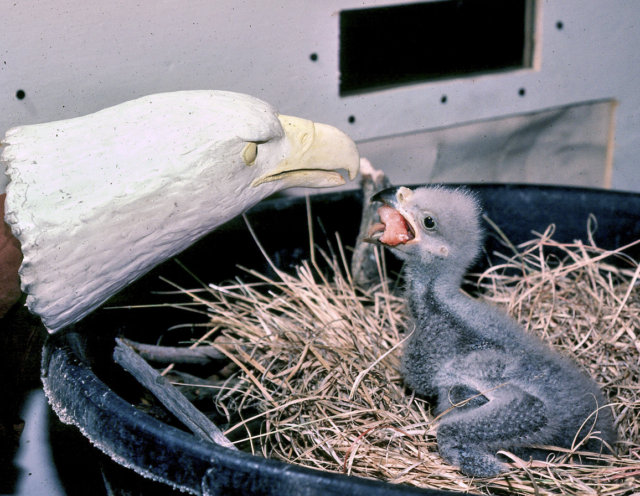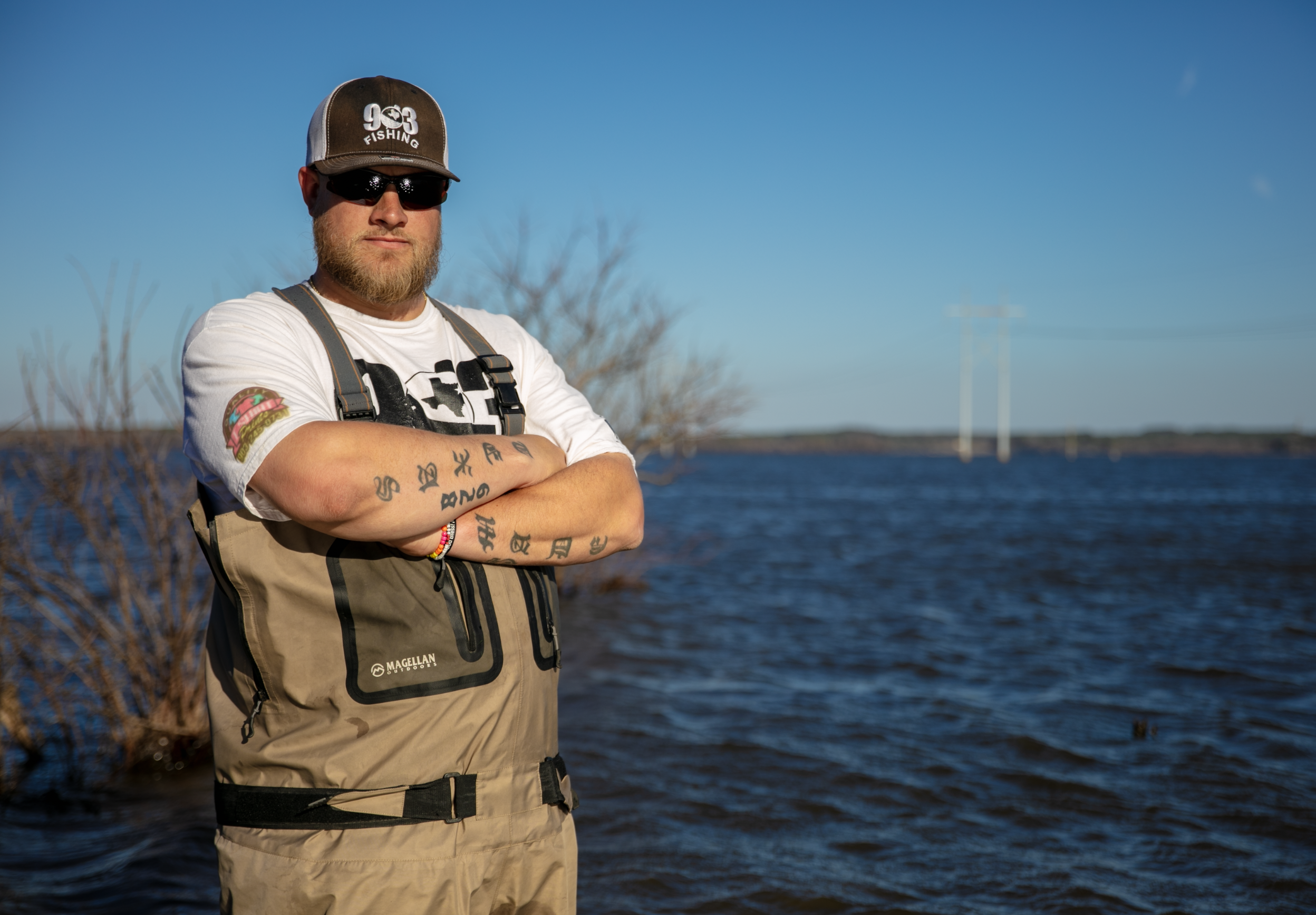by Todd Davis
Have you ever talked with someone and walked away questioning your life choices? That was me when I caught up with senior biologist Don Wolfe. After 40 years, I caught up with my college roommate and discovered that Don has dedicated his life to saving endangered species. As an outdoor writer, I do everything I can to support conservation, but for the most part, I shoot or catch things and write about them. Don noticed the awkward silence right away, a silence that happens when a hunter meets a conservationist. Instantly, he put me at ease,” You know Todd, I can’t do what I do without the support of outdoorsmen, and they can’t do what they do without conservation. I am carrying on the work of many others. I have big shoes to fill.” I knew then I needed to know more about what Don was doing.
Back In Time
If you let your mind travel back to 1982 when life was simpler, our hair was longer, and you could survive all weekend on a box of pizza. 1982 is also the year I met Don Wolfe, my college roommate. He ran cross country, and I played basketball for Bartlesville Wesleyan College in Bartlesville, Oklahoma. He was also a biology major, and I was a physical education major. He worked in the biology lab when he wasn’t running. I tagged along one day to help Don feed the creatures in the lab. A snake struck at me from under a protective wire cage, and I became the best runner on campus. That was pretty much it for me, but it was all in a day’s work for Don.
Fast forward to the present, and Don and I are standing in front of the George Miksch Sutton Avian Research Center. Ironically, we are only a few miles from Bartlesville Wesleyan College, now known as Oklahoma Wesleyan University. We are both older now, but you can hear the excitement in Don’s voice when he talks about the research, he has participated in over the years. A quick glance around, and you can see why he is so excited. The research center is all it’s cracked up to be and more.
Avian Research Center?
Before we get into Don’s research and the facilities of the research center, you are probably wondering what in the world an Avian research center does. From one redneck to another, I thought it was a place where hippies raised birds. What I found is a place where dedicated scientists work to restore endangered birds to their native habitat. When I say dedicated scientists, I am talking about people who love what they do so much that they dedicate their life’s work to it. Yeah…I was totally wrong about the hippie thing.
Getting back to the George Miksch Sutton Avian Research Center and the research that Don and others do. When they take on a project, they analyze it from every possible angle. When they were asked to help reestablish the southern bald eagle, they didn’t just hatch some eggs. They did exhaustive research into why the eagles are endangered, the condition of their natural habitat, how many birds are out there now, and how habitat can be improved to keep this from happening again. I could go on and on, but I think you get the point. No detail was overlooked. They have a research center to raise the eagles, but they also put boots on the ground. They are scientists and dedicated volunteers working in the field, monitoring, surveying, and recording that work to ensure the eagles will thrive and not merely survive.
The Mad Scientist
The research center works with other species than the eagle; they also work with various prairie chickens, ptarmigan, quail, and many other avian species. The facility itself is nestled atop 40 acres in the middle of the woods. Oak trees surround the buildings and overlook the valley below. I can’t picture a better location for such a place. After catching up in the parking lot, Don escorted me to his office. His office looks a lot like a mad scientist might work there. There are a lot of books, maps, research equipment, and even the gear you need to band and track birds. I am not totally sure he isn’t tracking me right now, but so far, no one in a white coat has asked me to lay an egg.
I have to say, I enjoyed every second of my visit. We talked about old times, what we have done with our lives, and where we are headed next. I thought I would open a can of worms up and ask a scientist about a controversial subject: climate change. To my amazement, Don didn’t take the opportunity to talk politics. He kept the conservation based on science. “Regardless of the origins of climate change, the data shows that over the years, certain mountain ranges have warmed so that vegetation that thrives at high altitudes is no longer thriving. We have noticed that ptarmigans who live in the cold elevations of those regions are in decline because they thrive on vegetation that is no longer there. They are simply moving up the New Mexico and Colorado mountain ranges where the vegetation is still available.”
No Politics, Just Science
I have to say I was impressed by Don’s answer, and if that was not enough, he backed his answer up with “before the climate warmed” and “after the climate warmed” maps and charts. It is clear he has done his math on this subject. They also spent years conducting population surveys to ensure that ptarmigan is indeed moving north. The research that the center conducts is not armchair science; they are in the field looking at issues from every angle and, after careful analysis, publish their work. From a sportsman’s point of view, it’s science without the politics and with a touch of common sense. In other words, it’s scientific research that outdoorsmen can get behind.
I am generally not one to stir the pot just once, so I gave it another stir and asked where the center stood on hunting. Once again, Don surprised me with his answer. It turns out he loves to hunt, loves guns, and is even a member of Quail Unlimited. Don is the first to acknowledge they rely on funds from various federal, state, and local agencies. Funds they know come from hunting and fishing licenses, among other things. They also rely on donations that often come from private organizations and even outdoorsmen. He wants to get the message out to all the supporters that the work the Sutton Center does is for advancing the species in its natural habitat. He also wants them to know that their money is for the science that it takes to make that happen.
The Grand Tour
I couldn’t think of another reason to stir the pot, so Don took me on a tour of the facilities. The main office facility also has a library and conference center. They have other buildings that they use for laboratories, breeding facilities, and education. The staff there takes security seriously. They can’t afford to have a redneck like me walk in and contaminate years’ worth of work. The laboratories and breeding facilities have scrub stations complete with booties and gloves to wear. One mistake could wipe out hundreds of birds. Since I was an old college buddy of Don’s, I thought I could skate past the precautions; let’s just say Don didn’t extend that offer. It was kinda cool, though; the attention to possible contamination is a little James Bond like.
After seeing the labs, breeding facilities, and education center, we made it back to the office. Several of Don’s co-workers stopped by to say hello. It is clear they all have a lot of respect for each other’s work. I guess when you dedicate your life to something, and you’re surrounded by others who dedicate their life to it as well, you earn their respect. His co-workers brought up the fact that Don has won several prestigious awards over the years. From the Hamerstrom to having his work displayed in the Smithsonian Institution, Don’s attention to detail and exhaustive research has been acknowledged nationally.
An Atlas to Remember
To know if a species is in decline, you must first know how many there are now. That’s where the Sutton Center comes in. I can’t imagine the work that went into it, but they completed an Oklahoma Breeding Bird Atlas and an Oklahoma Winter Bird Atlas. In redneck terms, the atlas is sort of like a bird census. They conduct them about every 20 years to see how different species are making it. I can’t imagine conducting a census on every bird species in the state, but they did. When compared to the previous atlas, Oklahoma has 3 billion fewer birds than it did in 1970! That is a little disheartening to say the least.
The George Misch Sutton Center is all about avian education and research. They are in the schools teaching our children about endangered species and the environment and encouraging them to get involved in conservation. They give out the Sutton Award to those who participate in telling the conservation story through art and essays. They have an internship for high school and college interns. Of course, there is the ever-popular live bird education program.
Don Wolfe and others at the George Misch Sutton Avian Research Center have clearly dedicated their lives to something that is bigger than they are. For example, Don’s work with the Attwater’s Prairie Chicken. After hearing Don’s co-workers talk about Don and other’s borderline crazy dedication to their work, my mind went back to his comments about big shoes to fill. These dedicated scientists have more than filled those shoes. In fact, from the founders to the supporters to the scientists to the volunteers of the George Misch Sutton Avian Research Center, they have all left their footprints all over this nation. The footprints they leave behind are not forgotten and are now inspiring a new generation that will someday leave footprints of their own.
If you would like to keep up with the George Misch Sutton Avian Research Center, check out these links:
Website: https://www.suttoncenter.org/
Instagram: https://www.instagram.com/suttoncenter/
Facebook: Facebook
Donate: https://www.suttoncenter.org/donate/












